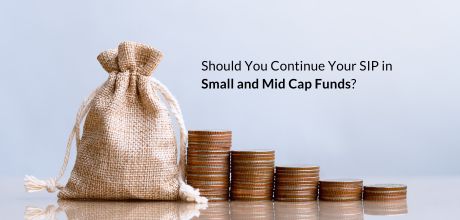How RBI Rate Hikes impact your Mutual Fund investments

Rising interest rates directly impact mutual fund investments, particularly debt funds, as bond prices drop in a high-rate environment, leading to lower returns, especially for long-maturity funds. While equity funds may also see short-term declines due to higher corporate borrowing costs and reduced liquidity, investors are advised to stay focused on goal-based investing, avoid market timing, and maintain SIPs to benefit from long-term cost averaging.
One of the most common questions that investors are asking their financial planner these days is – how do rate hikes impact my mutual fund investments? A lot of investors who have undergone online financial planning are especially worried, as they do not have a financial advisor to speak to about this. Their concerns are justified. After all, the RBI has gone after inflation with a vengeance, raising benchmark interest rates multiple times over the past few months. The most recent hike took the Repo Rate to 5.9%. So how exactly do rate hikes impact your portfolio? Here’s what you need to know.
The most direct & immediate impact of rate hikes can be seen on debt mutual funds. Bond prices have an inverse correlation with interest rates. That is, when interest rates go down, bond prices go up (thereby boosting returns from debt mutual funds) and vice versa. What this means is that in a rising interest rate cycle, it will be very difficult for debt fund managers to produce great returns. A case in point is the fact that dynamic bond funds as a category have returned a paltry 2.41% returns on a 1-year basis (as on 28th October ’22), since the RBI has turned hawkish in its stance and tone.
Any financial planner will also tell you that that debt mutual funds that hold bonds with longer maturities (for example, GILT funds) are a lot more sensitive to rate hikes. What this means is that a debt fund with an average maturity of 10 years will be more affected than say a short-term debt fund with an average maturity of 1 year. Similarly, the former will benefit more in a falling interest rate cycle too. So, if you are investing through a DIY app or an online financial planning channel, make sure that you do not allocate any long-term debt funds for your short-term goals.
The impact of rate hikes can also be seen on equity oriented mutual funds. First, easy liquidity (meaning low interest rate environments) usually results in large capital market inflows, driving up stock prices. When the cost of capital increases and liquidity dries up, some of this “froth” can subside, leading to a drop in stock prices.
Moreover, when interest rates go up, the cost of capital for corporates goes up too. This temporarily shrinks their profit margins resulting in lower profits. Since stock prices move in tandem with corporate profitability over the medium to long term, this may bring down your equity mutual fund returns in the short run as well. So, what should you, as an investor do?
Any financial planner worth their salt will tell you not to try and “play” the interest rate cycle. Remember, all projections are already built into current prices, so timing the market is a complete exercise in futility. Goal based investing is the best solution. If you are investing in equity mutual funds through the SIP route, just let your investments flow into the market irrespective of rate hikes or drops. In the long term, your unit costs will get averaged out through the ups and downs.
Domestic macros are looking very healthy – in fact, credit growth (basically, the number of people taking loans to buy stuff) is actually increasing despite interest rates going up. So, there’s absolutely no need to react to these rate hikes and take any short-term portfolio decisions. Just stay invested resolutely according to your goal tenor and you should do just fine.
Your Investing Experts
Relevant Articles
How To Select The Best Mutual Funds For Long Term Goals
Mutual funds offer a compelling way to invest for long-term goals, leveraging professional management and diversification to potentially achieve significant returns. But with a vast array of options available, selecting the best mutual funds for the long term can feel daunting. This guide will equip you with the knowledge to confidently navigate the mutual fund landscape and learn how to select the best mutual fund aligned with your long-term aspirations.
Should You Continue Your SIP in Small Cap Mutual Funds
Investing in small cap funds requires patience and discipline, especially during market corrections. By staying committed to your SIPs and focusing on long-term goals, you can leverage the power of rupee cost averaging and compounding. Don’t let short-term market noise dictate your strategy—remain focused, stay the course, and trust that your disciplined approach will yield results over time.
Systematic Withdrawal Plans (SWP): A Reliable Way to Generate Regular Income
An SWP allows investors to withdraw a predetermined amount from their mutual fund investments at regular intervals, such as monthly, quarterly or annually. The beauty of SWPs lies in their flexibility—they provide consistent income while allowing the remaining investment to continue growing.
.png)


_(2).jpg)